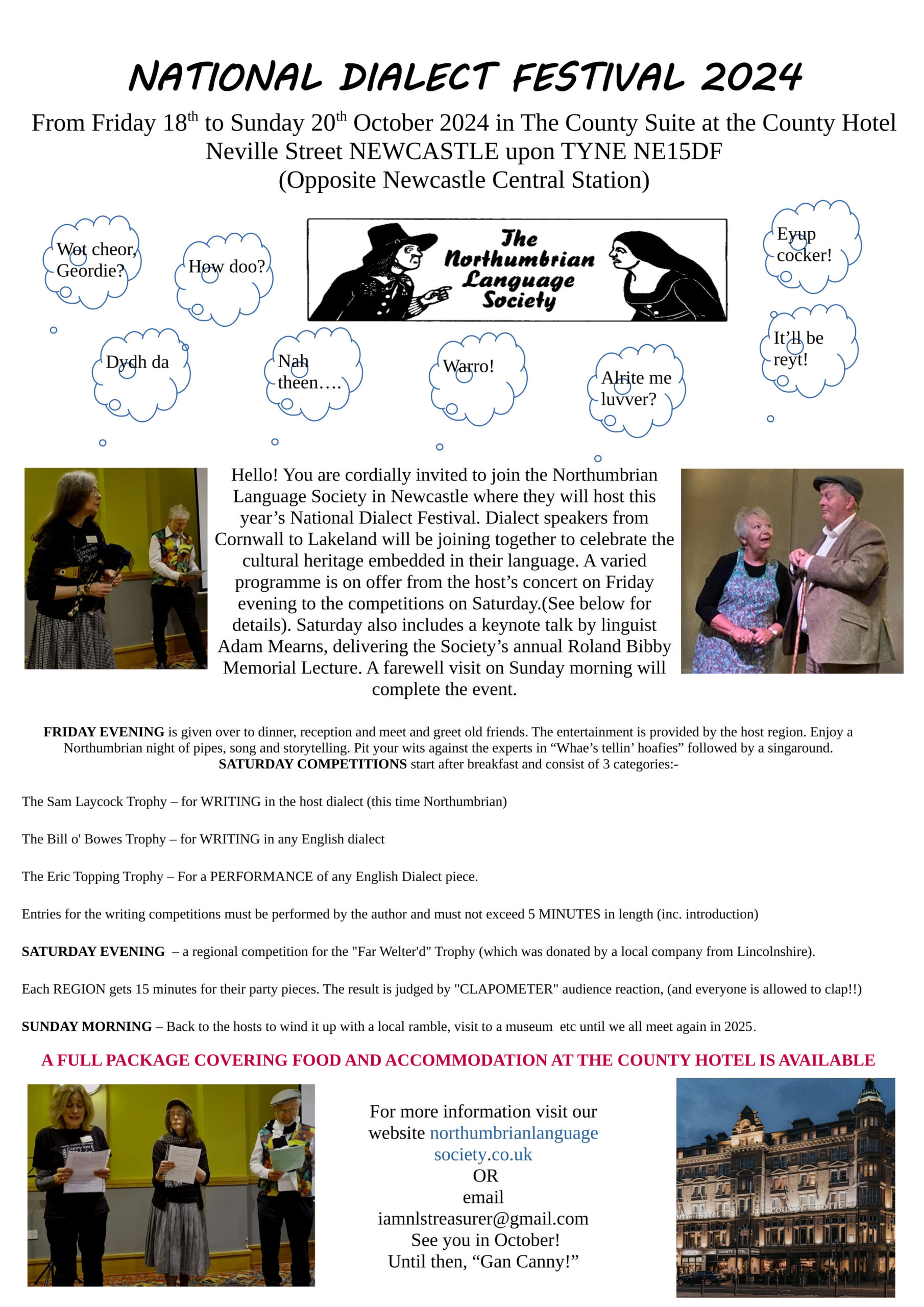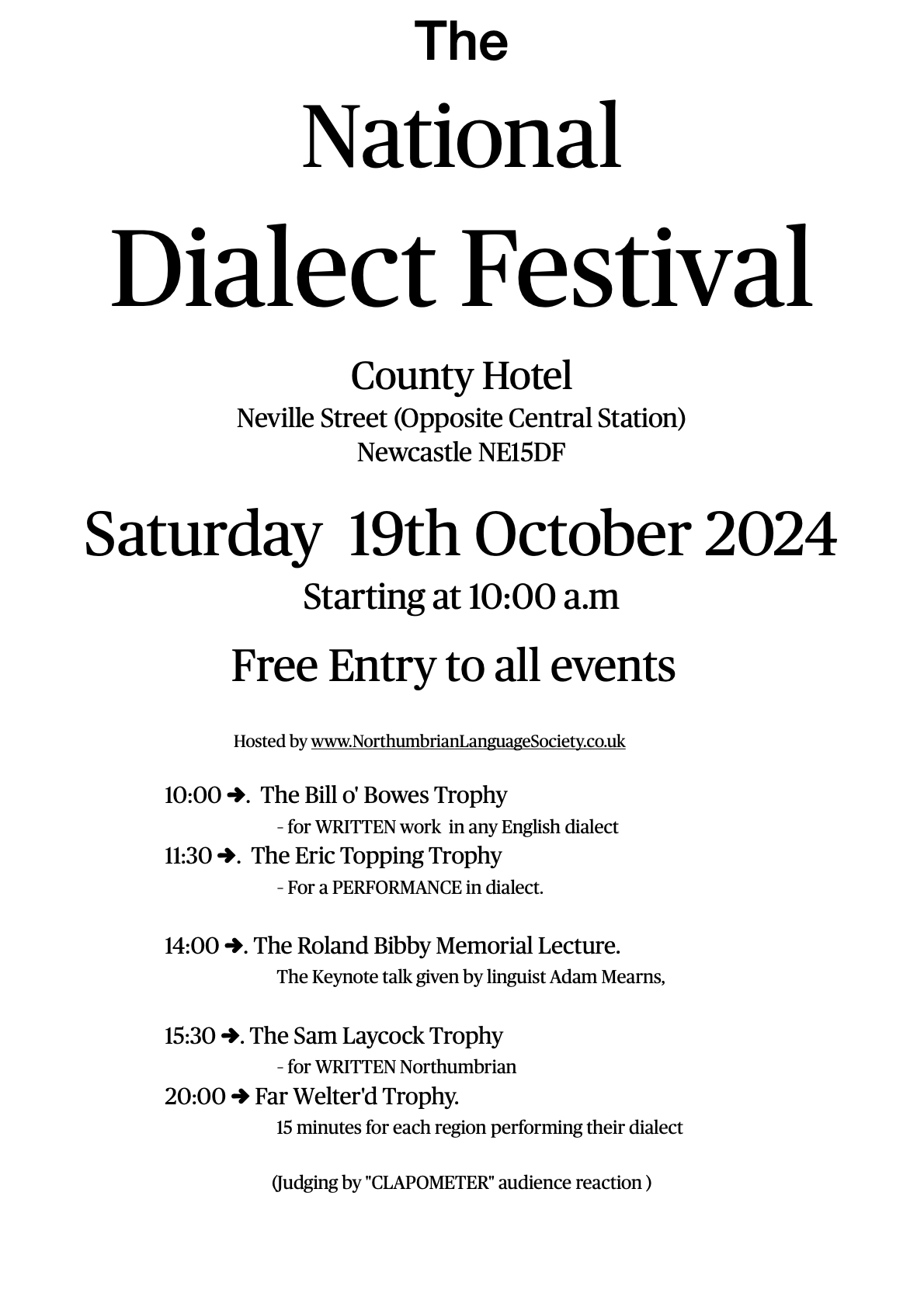Northumbrian. An Evolving Language
Modern English is a mongrel language, made up of many linguistic strands. Celtic, Latin, Anglo-Saxon, Scandinavian and Norman-French are the principal roots, onto which have been grafted words and phrases from every part of the world during the last five hundred years. It is this linguistic flexibility which has helped to turn English into an international language that is universally known and used.
Northumbrian is one of the Anglo-Saxon languages. It is the direct descendant of the Anglian speech that was widely spoken throughout most of central and northern Britain in the centuries following the decline of Roman rule in the early fifth century AD. A proper understanding of the development of the Northumbrian language cannot be achieved without some knowledge of the historical background, but before embarking on that saga, a linguistic diversion is necessary.
Is Northumbrian a language, a dialect or an accent?
Those reasonably well versed in modern British culture may have heard of footballer Alan Shearer, or of actor Robson Green, or TV presenter Jayne Middlemiss, all of whom speak with a clear regional accent. The words they speak are mainly standard English, but they are spoken with a distinct Northumbrian accent.
Most British people are probably familiar with, and understand, the traditional Geordie war-cry of “Haway/Howway the lads!” and would accept that it is unique to Tyneside. The same is true for “Newcassel Broon Ale”. These phrases are clearly different from standard English, but they are generally understandable, and they can therefore be classified as part of the north east of England’s regional dialect.
But what about “Fornenst thi cree an abeun thi hemmel, wu’ll hev wor bait, an batten worsels, time wu watch wor bollen bellies graa tiv i muckle, yarkin size”? Individual words are recognisable as English, but what does the rest of it mean? If you can’t translate the rest into English, then you’ve come across a different language; and that language is Northumbrian.
Read about ‘A day oot wi mi marras’ {A day out with my friends} here.
Northumbrian is a language because it satisfies the comprehensibility test, which states that related dialects become separate languages when they are no longer mutually comprehensible, like Spanish and Portuguese. Speakers of Northumbrian are not very bothered about whether their speech is regarded as a language or a dialect, because it can be both. The important point to grasp however, is that whilst Northumbrian is an English dialect, it is not a dialect of standard English, because Northumbrian came into existence centuries before standard English was created.
Read about the differences between Northumbrian and ‘Standard’ English Here
How Romans and Vikings left their influences. Click Here
Share this content


